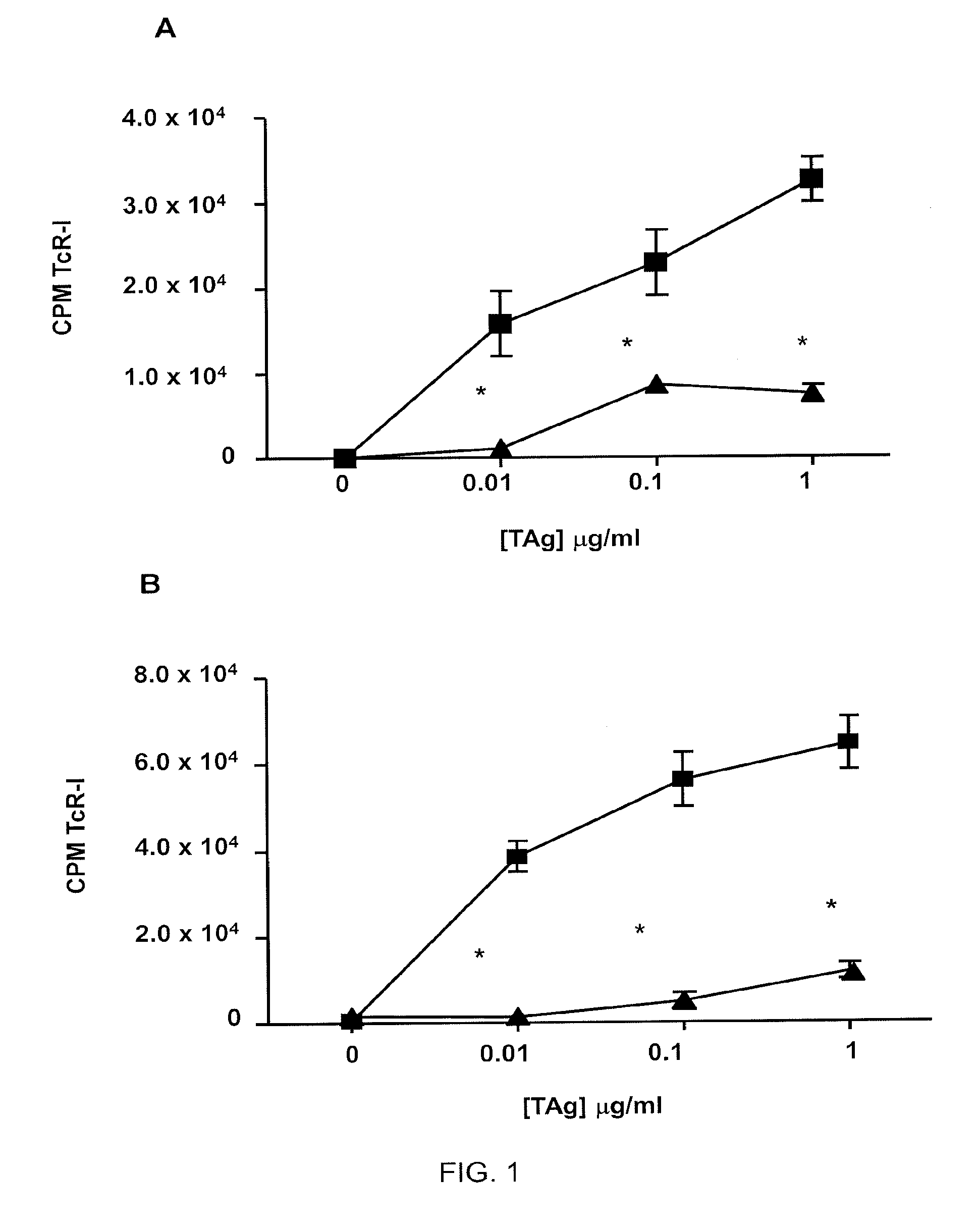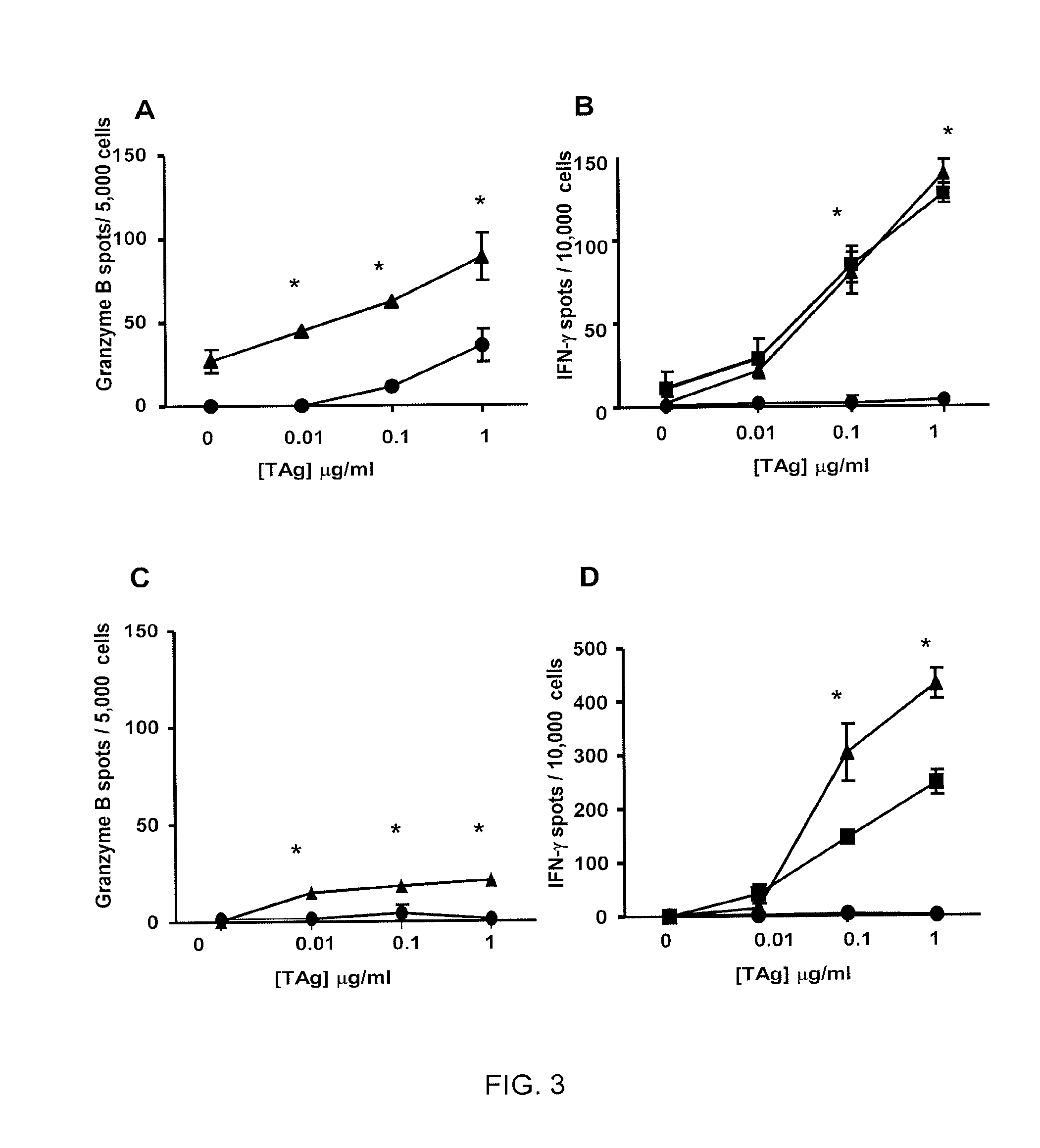Immune modulators relating to foxo3a
a technology of immune modulator and foxo3a, which is applied in the field of immune modulator relating to foxo3a, can solve the problems of t cell tolerance, loss of antigen-specific t cell function, and failure of t cell to immunologically respond, so as to enhance the immune response to a cancer antigen and inhibit the activity
- Summary
- Abstract
- Description
- Claims
- Application Information
AI Technical Summary
Benefits of technology
Problems solved by technology
Method used
Image
Examples
example 1
[0132]This example demonstrates that dendritic cells (DCs) infiltrate human prostate tumors.
[0133]Histological analyses detected strong leukocytic infiltration in biopsies of advanced prostate tumors. Flow cytometric analysis of disaggregated tumor biopsies revealed that among the CD45′ cells, 63% were CD14+ / CD16+ macrophages, 21% were CD11c+ conventional DC (cDC), and 14% were CD123VCD304+ / CD11c− pDCs. Based on their proposed regulatory function, the pDC population was enriched using magnetic beads coupled to anti-PTK7 or anti-CD304 (Colonna et al., Nat. Immunol., 5: 1219-1226 (2004)). Enriched TADC were stained with a modified Wright-Giemsa stain after cytospin and were analyzed for pDC surface markers and co-stimulatory molecule expression. The purified cells had a plasma cell-like morphology and were CD123+, ILT7+, and CD11c−, consistent with human pDCs, and also expressed low levels of CD80 and CD86.
example 2
[0134]This example demonstrates that tumor-associated DC (TADC) have a lower stimulatory activity than autologous PBMC.
[0135]To determine the ability of human prostate TADC to stimulate T cells, enriched pDCs were cultured with autologous peripheral blood T cells and a pool of common viral antigens (cytomegalovirus (CMV), Epstein-Barr virus (EBV), and influenza virus (Flu): “CEF”), and T cell proliferation was measured. The results are shown in Table 1. Data are representative of 4 patient samples.
TABLE 1Counts per Minute (CPM)-Patient PBMC[CEF]μg / mlTADCPBMC0under 250 under 2501under 250**4.0 × 10321.0 × 103**7.0 × 10351.2 × 103**6.5 × 103mean ± s.d.,**p
[0136]Using this assay, it was observed that the CD123+ pDC from tumor biopsies (TADC) had a lower stimulatory activity than autologous PBMC (Table 1) or pDC from non-tumor tissue.
example 3
[0137]This example demonstrates that TADC tolerize T cells.
[0138]Given the diminished stimulatory activity shown in Example 2, the tolerogenicity of TADCs was assessed by testing their ability to tolerize peripheral blood T cells. A tolerance assay was designed wherein three days after co-culture with TADCs and CEF antigen (primary stimulation), T cells were harvested and re-stimulated with autologous PBMC and CEF antigen (secondary stimulation), and proliferation was assessed. The results are shown in Table 2. Data are representative of 2 patient samples.
TABLE 2Proliferation (CPM)TADC (source of primaryPBMC + antigen (source of[CEF]μg / mlstimulation)primary stimulation)0under 250under 2501under 2501.0 × 103 22502.5 × 103* 55005.0 × 103**mean ± s.d.,*p **p
[0139]Unlike the strong proliferative response observed by T cells initially cultured with PBMC as a source of APCs, T cells initially cultured with TADCs were unable to respond to secondary stimulation by autologous PBMCs and anti...
PUM
| Property | Measurement | Unit |
|---|---|---|
| Fraction | aaaaa | aaaaa |
| Fraction | aaaaa | aaaaa |
| Fraction | aaaaa | aaaaa |
Abstract
Description
Claims
Application Information
 Login to View More
Login to View More - R&D
- Intellectual Property
- Life Sciences
- Materials
- Tech Scout
- Unparalleled Data Quality
- Higher Quality Content
- 60% Fewer Hallucinations
Browse by: Latest US Patents, China's latest patents, Technical Efficacy Thesaurus, Application Domain, Technology Topic, Popular Technical Reports.
© 2025 PatSnap. All rights reserved.Legal|Privacy policy|Modern Slavery Act Transparency Statement|Sitemap|About US| Contact US: help@patsnap.com



